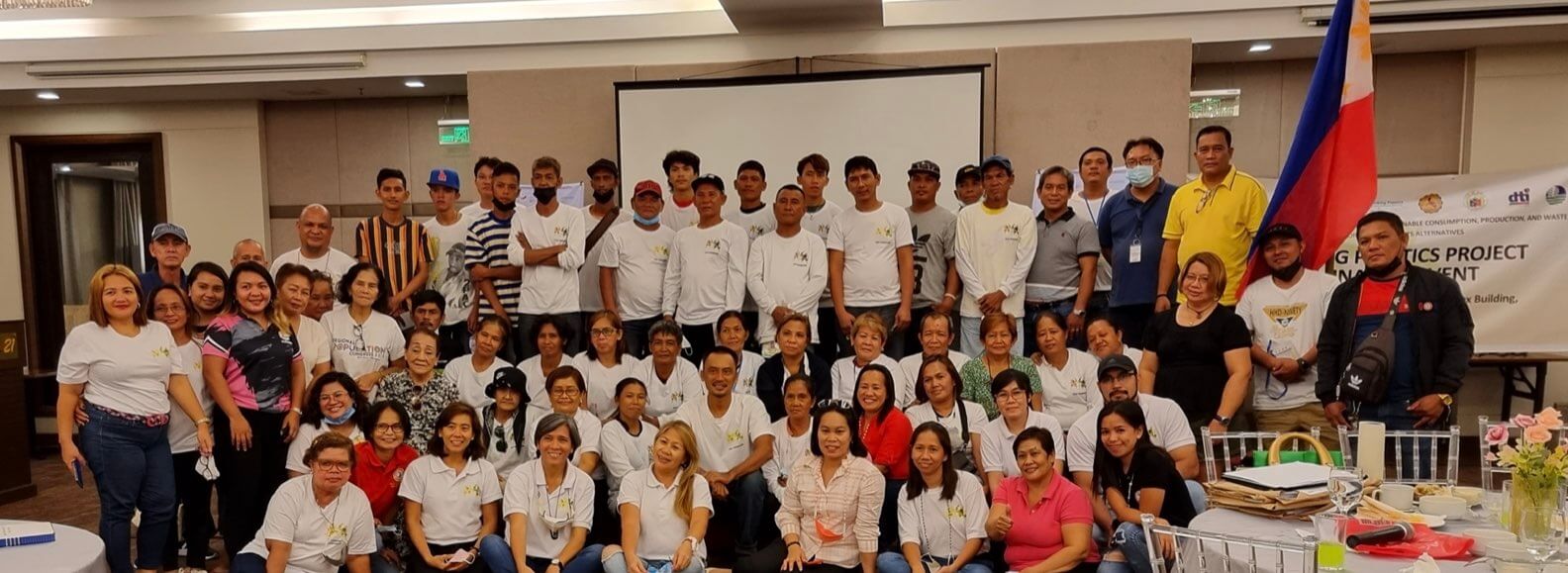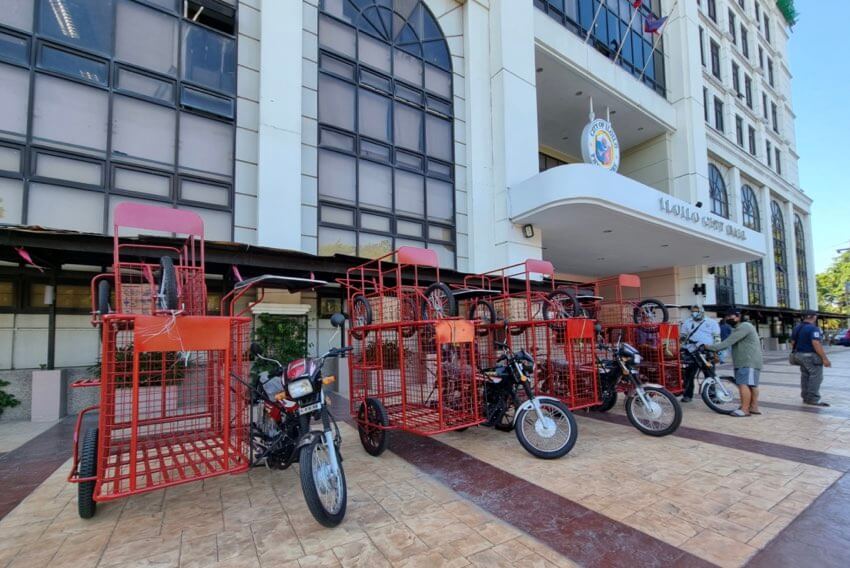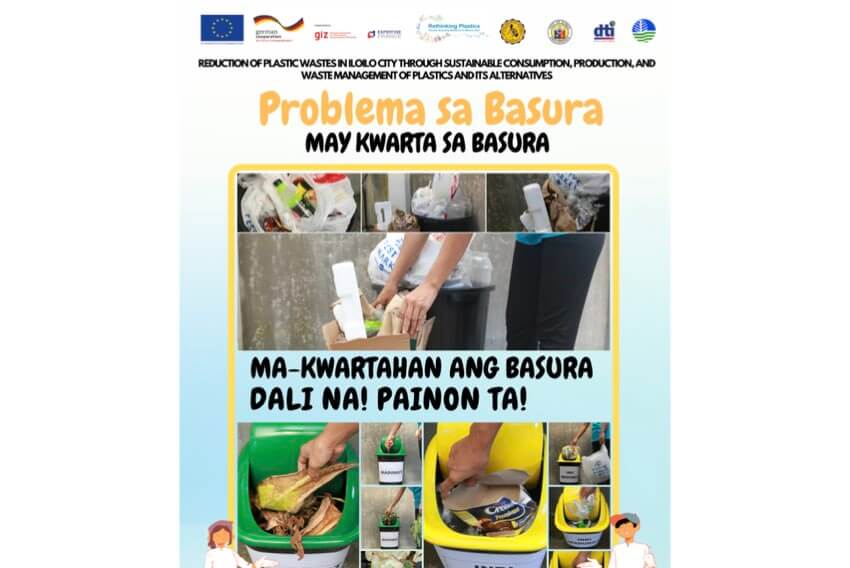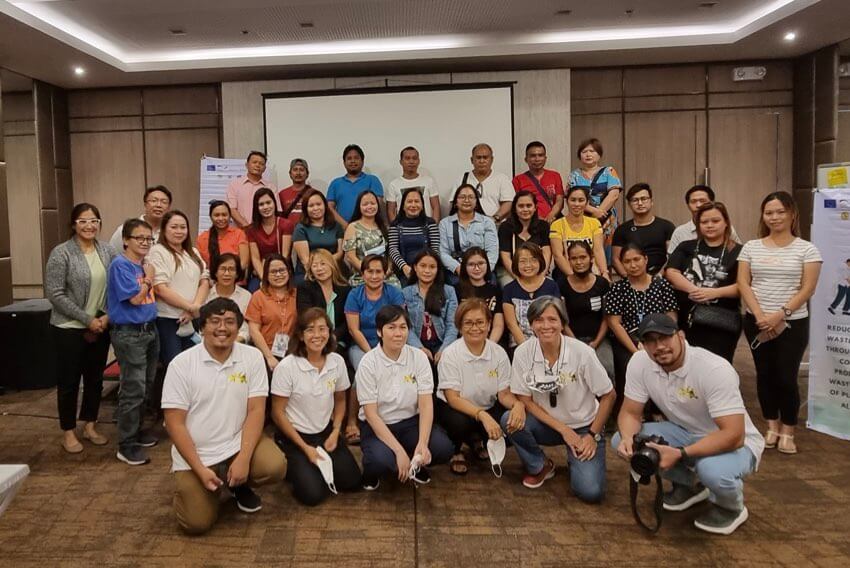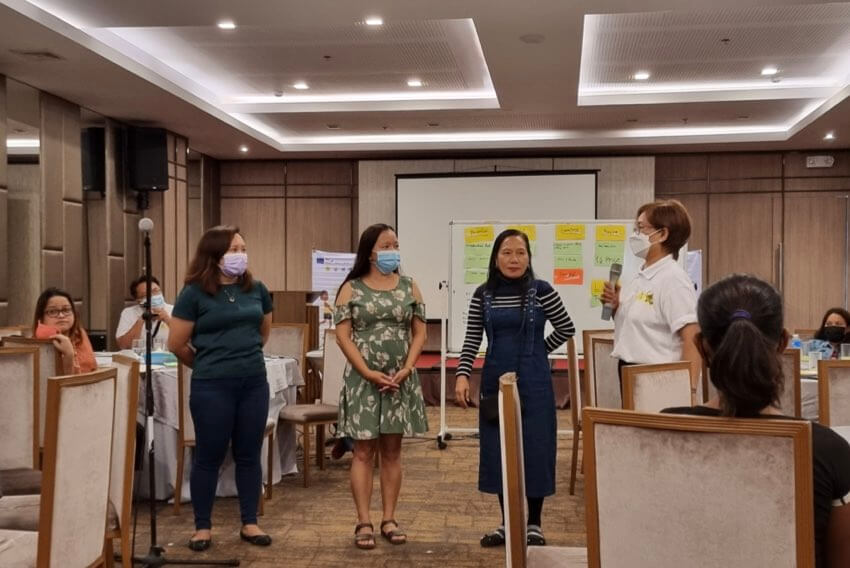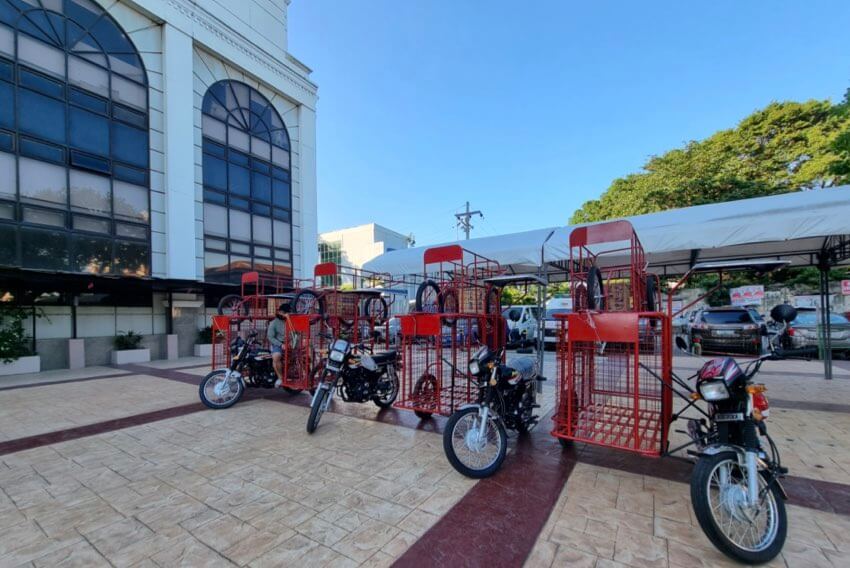Reducing Plastic Waste in Iloilo City
Iloilo City lies on a Philippine island in the Sulu Sea. It is the regional hub for education, tourism, culture and industry. But it has a problem: with plastic products used more and more by businesses and households, plastic waste is increasingly disposed of on its streets, rivers and in the sea.
Where streets are too narrow for waste collection services to access them, plastic garbage piles high. This pilot project focused on improving waste management in 13 of the city’s neighbourhoods, known locally as barangays. The neighbourhoods were selected according to specific criteria, such as if they were difficult to access or had nearby markets. Each barangay needed a different form of support from the project in order to ensure that waste was able to be collected and taken to the right place. Many actors came together to make the project a success: the city government, district administrations, waste workers, households, businesses and local institutions. With new equipment, the city was able to recover more than 10,000 tonnes of plastic waste, and prevent it from polluting the water. And now that the systems are in place, that figure is set to rise.
“There is an increased awareness on Sustainable Waste Management and circular economy of the people in pilot communities. More and more people are practicing waste reduction, segregation, reuse, and recycle and we experience more economic participation from the marginalized groups, which include unemployed, less educated men and women as well as higher waste material recovery along the recycling chain. All of this resulted to lesser waste that goes to the sanitary landfill of the city.”
Dr Mary ‘O T. Penetrante, University Research Center, Central Philippine University
WHAT HAVE WE ACHIEVED IN 15 MONTHS?
1. Assessing the system
We analysed the waste management system and plastics value chain in Iloilo City and found that the waste collection services couldn’t reach all areas of the city because of its narrow roads and a shortage of trucks. Despite this, about 300,000 kg of waste gets collected every day. Around half of the trash is biodegradable, and the rest consists mostly of residual or recyclable waste. One third of the garbage collected is transported to landfill, and recyclable waste like glass, paper and plastics is collected by waste workers and sold to one of the 17 junk shops in the city that recover these materials.
2. Reworking the waste chain
Using this data, we started improving the waste collection system in 13 barangays. These included areas, for example, that weren’t accessible to the city’s garbage service. We provided them with equipment and tools for waste collection, such as specially designed motorbikes with sidecars, pushcarts, weighing scales, waste scoopers and rakes. We organised trainings on sustainable waste management for more than 50 people. After completing the training, 39 of them started working as waste workers – known as eco-aids – and managers of materials recovery facilities. They classify and record the waste as part of an improved monitoring system. Today, households and businesses in the 13 barangays can rely on a regular waste collection service.
We also worked with more than 1,200 district officials and strengthened links between them and recycling chain actors, such as junk shops that buy recyclables. An ongoing dialogue has now been established, and strategic plans have been developed or revised, making the recycling chain in the city smoother and more efficient. Around 25 junk shops now have official ties with the district administrations, and the junk shop sector is represented on the city’s board for sustainable waste management. The collaboration has also influenced policies, which have been adapted based on project recommendations and developments.
We also explored and tested eco-alternatives to plastic waste, as well as packaging designed to be recovered and reused in a circular economy.
3. Building a system through communication
Information and education were central to all activities. In our trainings and events, we reached out to 48,000 people in the 13 barangays about the importance of reducing plastic waste in households and businesses. We explained why and how to collectively manage our waste. For this, we created online and in-person materials, such as brochures, banners and radio jingles. As a result, almost 8,000 households and businesses now support our work in the 13 barangays by segregating and reducing their waste. More than 1,500 people took part in two clean-up events.
WHAT ARE OUR RECOMMENDATIONS FOR ILOILO CITY?
- The Central Philippine University and the City Government will continue their partnership after the project to ensure that the policy recommendations are implemented.
- Iloilo City Waste Management will update its 10-year Sustainable Waste Management Plan and the strategies it has adopted to reflect the changes in the environment. The mechanisms for monitoring and evaluating must also be improved in order to ensure the sustainability of the project initiatives.
- Eco-aids and managers of materials recovery facilities are key actors and should be trained and encouraged to find ways to make their systems more efficient and become agents of change in the community.
- There is significant potential to implement the eco-solutions model city-wide, as well as to work with other districts to reduce the generation of waste and increase capacities. For this, there is a need for financial and policy support, together with strong collaboration among the different stakeholders.
Implemented by: Central Philippine University (CPU) / https://cpu.edu.ph/
Facebook: https://www.facebook.com/profile.php?id=100079817205665

